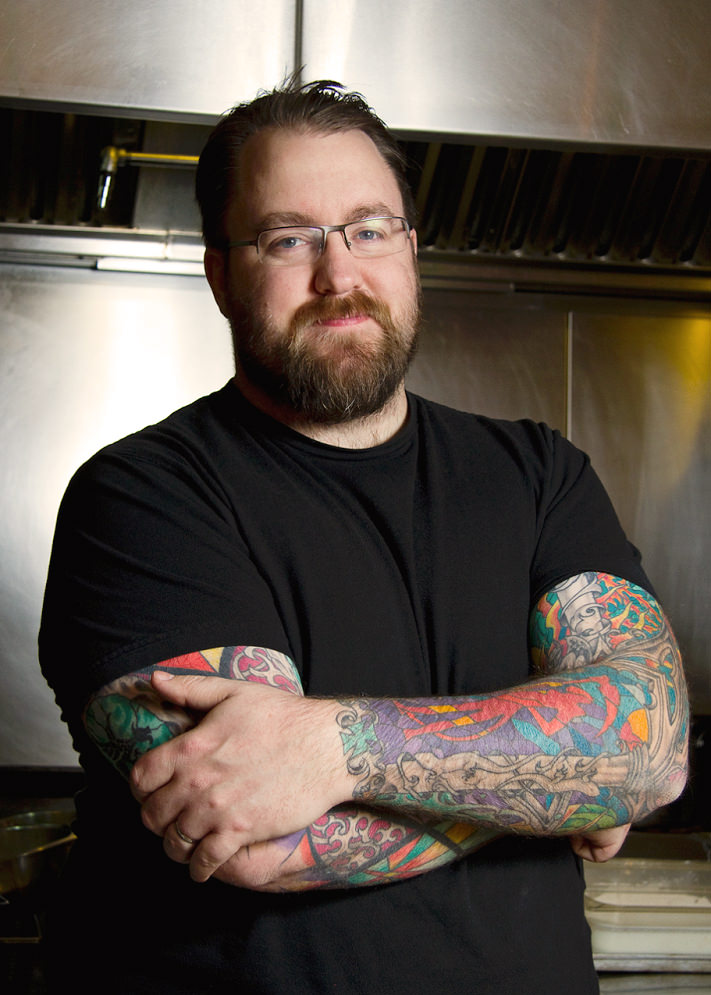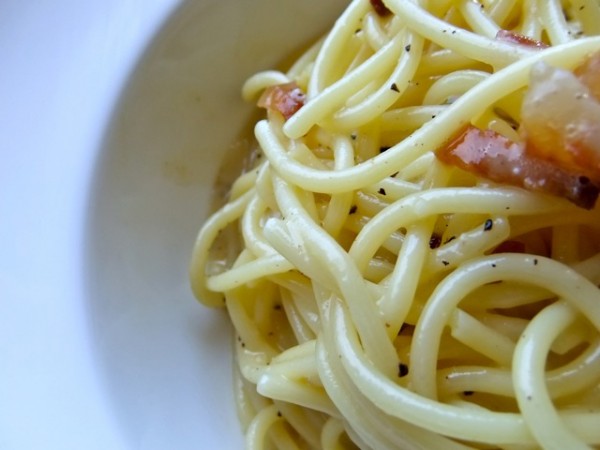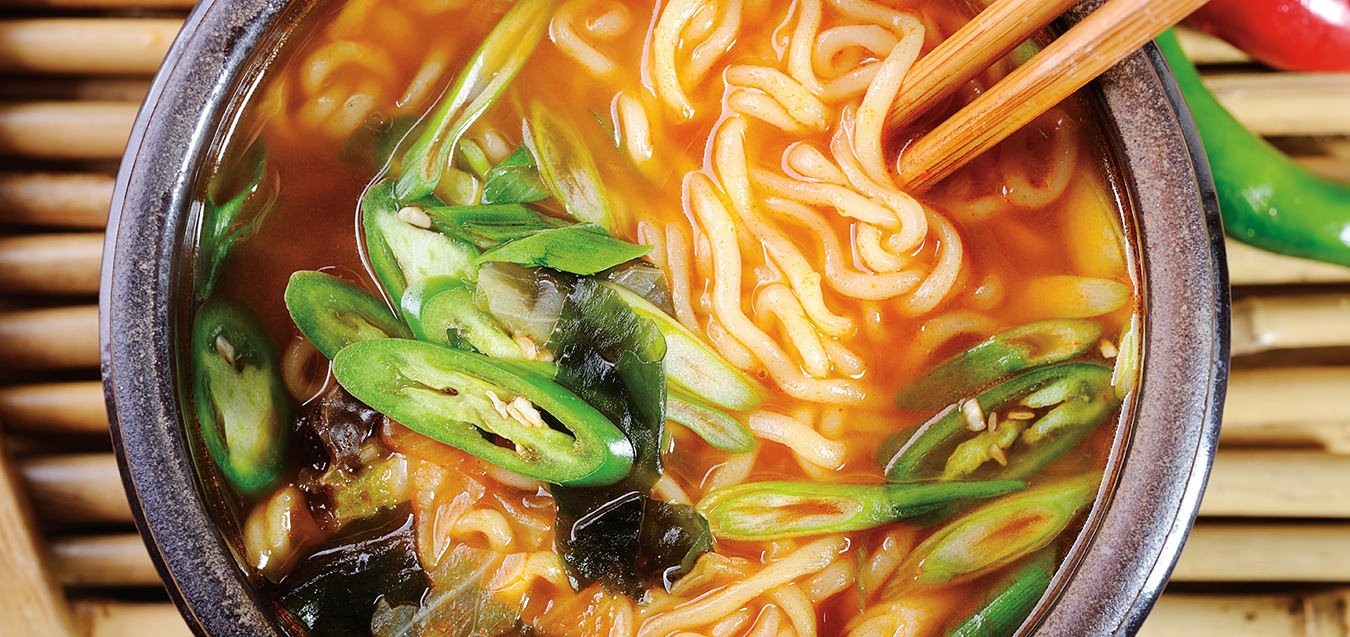Eating (Entire) Animals
With a pasta carbonara recipe from chef Robert Belcham.

A rising awareness of the fact that Canadians throw away a reported $31-billion worth of edibles annually has sparked grassroots endeavours to reduce food waste. For instance, Vancouver chef David Gunawan of Farmer’s Apprentice and Royal Dinette has begun serving upscale “ugly duckling” meals similar in concept to those of New York chef Dan Barber’s WastED restaurant—both use ingredients more commonly turfed (think squash vines, sweet potato leaves, and corn cobs). Along with the renaissance of old-world culinary practises like canning, fermenting, cheese-making, and charcuterie, it seems the concept of using every little last bit has been born anew, with the culinary world recognizing that “throwaway” cuts not only make for sustainable meals; they offer flavours that can transcend their drab origins to become delicacies.
Yet while diners may be convinced to try waste-free meals skillfully prepared by trained chefs, home cooks can be stymied by the prospect of basing dinner around an unfamiliar ingredient—especially when that ingredient is a cut of meat culturally condemned as off-putting. Still, most enlightened foodies agree that the respectful way to consume animals is to limit the waste of their meat—an ideal that chef Robert Belcham, Vancouver’s king of snout-to-tail butchery, holds dear. “It’s only sort of in the last 50 years that we can go to the grocery store and just buy pork chops,” says Belcham, who purchases four whole Berkshire pigs a month from Vancouver Island’s Sloping Hill Farm for use in his restaurants, Campagnolo and Campagnolo Roma, and uses everything from their ears to their bones (with which he makes charcoal). “If my grandfather wanted pork, he’d have to kill a pig and then they had to eat the whole thing or they wouldn’t eat. I think as a chef it’s our duty to give the respect the animal deserves by using every last bit. Bones, cartilage, and skin can go into stocks, and then every piece of meat on the animal can be used.”
In France, brains, feet, udders, tails, and offal were historically so popular among the well-to-do that they eventually became known as les parties nobles. However, as Jennifer McLagan writes in her cookbook, Odd Bits: How to Cook the Rest of the Animal, “if you’re not bold, start with one of the head’s parts.” Indeed, an animal’s cheek, a meaty muscle well-worked from mastication and ideal for slow-braises, is a great gateway into whole-animal cooking. Cheeks aren’t too farfetched amongst foodies—they vacillate in trendiness, occasionally appearing on menus, and grilled tontoro is a classic Japanese izakaya mainstay—but securing them still often requires a special request to one’s butcher. Sure, as opposed to more decontextualized cuts like chops, strips, and chuck, cheeks are evocatively identifiable—you have two on your face right now—so maybe eating them could be construed as weird. Yet, as preeminent American food writer M.F.K Fisher once wrote: “People who feel that a lamb’s cheek is gross and vulgar and a chop is not are like medieval philosophers who argued about such hairsplitting problems as how many angels could dance on the point of a pin.” In Belcham’s words: “They’re just tasty as hell.”
Belcham primarily uses pork cheek to make guanciale, an Italian-style cheek cured with cayenne, black pepper, sugar, and salt, sold prepared at Italian grocers. It is one of the key ingredients of pasta carbonara, often erroneously replaced by pancetta or bacon. “It’s funny,” says Belcham, “carbonara is this much beloved and much bastardized dish. There’s really only spaghetti, cheese, eggs, and guanciale, maybe a little onion in it, depending on what side of the world you’re on. And of course black pepper.” Indeed, it would be difficult to find a simpler way to confront one’s own food biases than with an authentic plate of pasta carbonara, or some tenderly braised pork or beef cheeks, before advancing to experiments with cuts that would make your grandpa proud.
Campagnolo’s Pasta Carbonara Recipe, courtesy of Robert Belcham

“That’s the one thing I love about our version, is that you go, should there be this much black pepper? And then you’re like oh yeah, it’s really good.” —Robert Belcham
Serves: 4
Ingredients
½ cup guanciale, diced
2 tbsp extra virgin olive oil
2 generous tsp freshly ground black pepper
Salt, to taste
¼ cup red onion, very thinly sliced
½ cup dry white wine
1 large whole egg
½ cup pecorino romano, finely grated
400 g fresh spaghetti
Method
Bring a large pot of cold water to a boil and season heavily with salt. In a small bowl, mix the egg and grated pecorino and reserve.
In large sauté pan, heat the extra virgin olive oil over medium-high heat. Add in the diced guanciale and slowly cook until it renders some of its fat and begins to crisp. Stir in the red onion; once translucent, add the black pepper, sautéing briefly. Add in the white wine and deglaze. Remove pan from heat.
Start cooking your pasta; it should take 2–4 minutes maximum. Add the hot, cooked spaghetti and the pecorino egg mixture to the pan, mixing off the heat until the sauce is thick and uniform. You can use a bit of pasta water to adjust the consistency of your sauce. It should just nicely coat the pasta.
Divide amongst 4 warm pasta bowls and serve.




